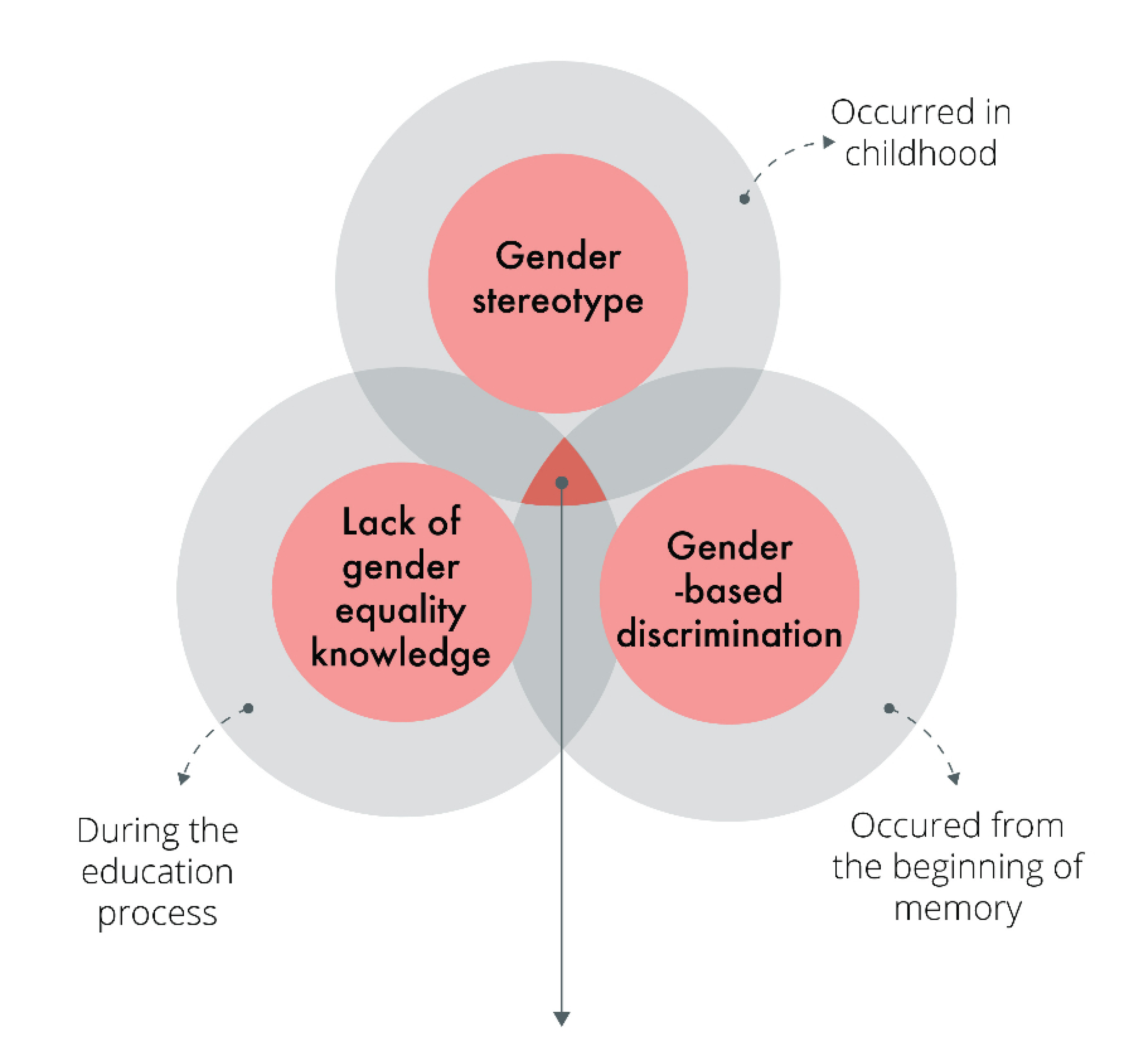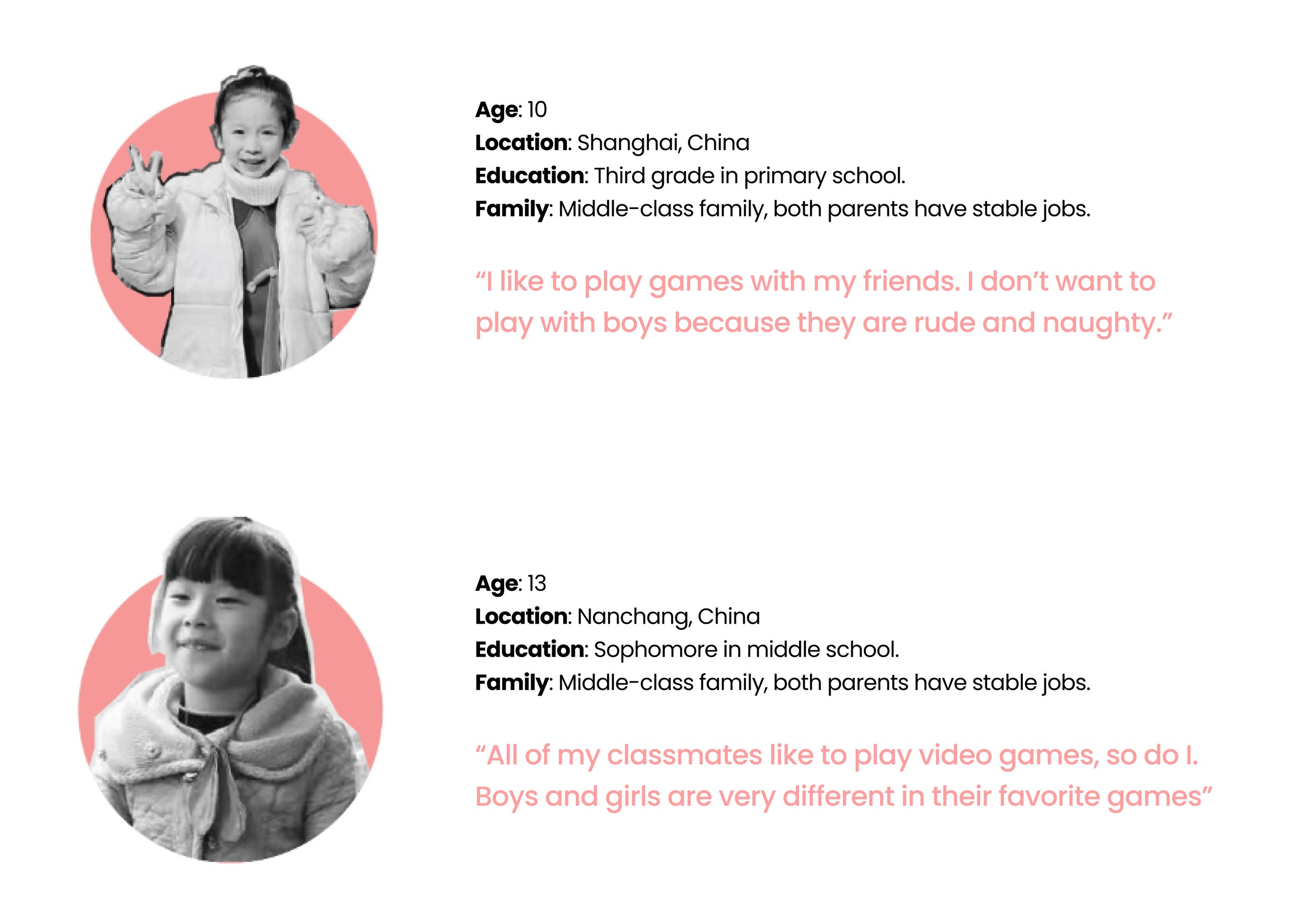Personal Project
Children sex education
The Game of Equality
European Product Design Awards - TOP Design
MUSE Design Awards - Gold Awards
Communication Arts - Shortlist
BRIEF
In 2022, women face a 39% chance of job and income equality, with only a 20.9% probability of political rights parity. Gender inequality persists. The goal of this project is to find a solution to tackle the root causes of this problem.
MY ROLE
Design research, User research, Interaction Design, AR development
TIME
6 weeks
TOOL
Cinema 4D, Unity
Project Overview
“The Game of Equality" combats gender inequality through an AR game for kids aged 10~16. It combines a pop-up book with a phone-based AR game to educate and engage children effectively.
Research Process.
Location: Shanghai, China
The Problem
How serious is the gender inequality?
The gender gap in China remains more significant than in other countries, and, worse still, it has been widening over the past five years. This indicates that the issue of inequality between men and women still requires attention and improvement in China.
The Problem
How do men and women view gender equality?
According to the data, Chinese citizens have a greater confidence of gender equality in China. However, the current situation is not that optimistic.
Research Question
How might we find an innovative and effective solution for gender inequality, a wicked problem?
Background Research
Interior differences between men and women
Modern science has no way to explain whether these differences have led to great differences between men’s and women’s minds.
Background Research
Exterior causes of modern gender inequality
The inadequate economic development in China is the major exterior cause of modern gender inequality.
Methods to eliminate differences
It is almost impossible to achieve economic balance by individual effort.
Research Challenge
Both interior and exterior causes are almost impossible to change by individual efforts.
Survey Research
At what point does the concept of gender inequality arise in everyone's mind?
I conducted a brief survey, sent it to 20 high school students and 20 middle school students to know the indirect causes of gender inequality.
Research Analyze
My approach:
Among 37 valid survey answers, I concluded 3 main causes of gender inequality.
I decided to start with children’s education to alleviate gender inequality.
User Research
Target Users
Since the age and location of users will impact the depth and amount of information in an education product, they are very important to this project. Based on the qualitative and quantitive analyze of the survey results and a deeper research of children’s psychological growth, I’m able to determine the target user’s age and location.
According to Sigmund Freud, the basic adult personality have been formed in the first three stages of development. Therefore, 10~20 years old children can understand sex education effectively.
Education Method Research
Explore effective education methods
After researching children's psychology, I have decided to enhance education efficiency by incorporating information that children are familiar with and content that can spark their curiosity.
User Interview
What educational methods are easily accepted by children nowadays?
According to the interview of 10 and 13 years old children, I know that children between 10 and 16 years old like to play both physical and digital games. Therefore, I decided to implement gender equality concepts into a playful experience.
Idea 1
LEGO Role-Play Game ❌
This game lets three boys and three girls build a LEGO house together. They will take on the roles of architecture designers, decorators, engineers, and workers. Both boys and girls will perform tasks that differ from what is traditionally associated with their gender. This way, they can learn that a person's ability is not limited by their gender.
Problem 1
Each children’s physical ability and preference cannot be predicted.
Problem 2
Children will not be involved in the process of building a house in their daily life, which lack of the information they familiar with.
Problem 3
Children are already familiar with LEGO toys, and my game may not arouse their curiosity anymore.
Idea 2
AR Game ✅
An augmented reality (AR) game combined with a pop-up book. The book features familiar situations for children, such as school and amusement parks. The AR game introduces virtual characters and dialogues that address concepts of gender inequality.
Video Game Analyze
I researched other 4 types of educational games to learn their interaction method, game structure, and interface layouts. Also analyzed their weakness and strengths from 5 aspects: clarity, interest, suitability, simplicity, and education.
After analyze other video games, I learned that a good educational game needs a clear interface and tutorial, simple process, appropriate interaction, and interesting dialogues.
Design Process
Design Purpose
Educate children from a superficial level about the right attitude toward gender and the ideal society we want to achieve. Then reduce children’s gender stereotype.
Eventually, alleviate the gender inequality in the future society.
Ideation
Game Structure
This game contains 13 different dialogues between two virtual characters, all based on real-life situations. At the end of each dialogue, the player is invited to choose between three types of thoughts, each with different scores. Ultimately, the player's choices will determine the virtual world's various endings.
Ideation
Story boards
Low-Fi Prototypes
Game Style
Design System
I created the design system of this game.
Game Development
Character Design & AR effect
I built a demo of the game by using Vuforia in unity, C#, and cinema 4D.
Final Design
The Game of Equality
An AR game that aims to deliver the basic gender equality concepts to children.
AR Tutorial
Let the children explore and familiarize with AR effect in a easy and funny way.
Real-life situations
Pop-up books feature four situations closely tied to children's lives, aiming to make it easier for them to understand and accept the concepts of gender equality.
Virtual Dialogues
The dialogues between characters address common gender inequality topics, enabling children to immediately understand and relate these issues to their own lives.
Make Decisions
Decision-making in the game reflects children's authentic ideas, leading to various endings that prompt learning and reflection.
Usability Testing
I invited 4 children aged 10~16 years old to try the prototype of the game
Outcome




























